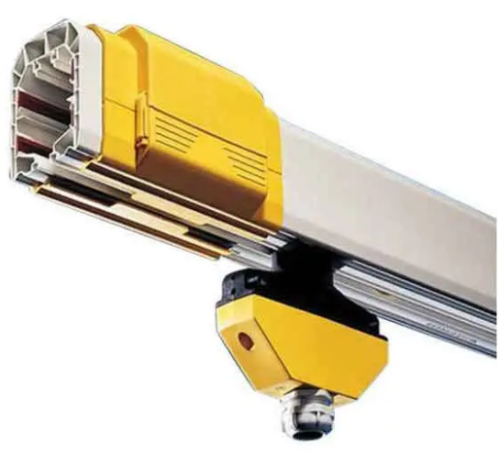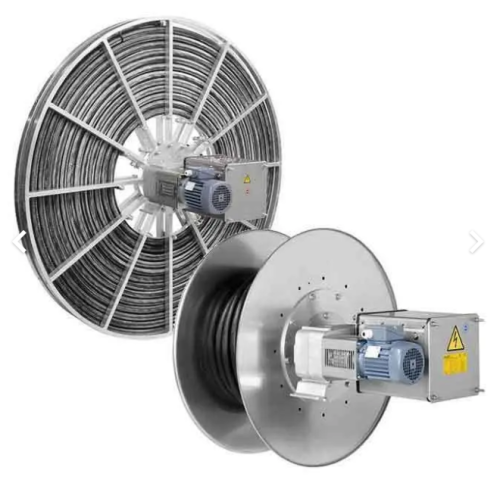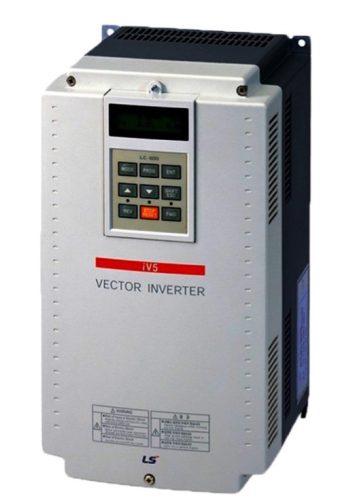Specifications of electrical equipment
Crane electrical system panels are manufactured based on IEC 34-144-157-158-255-269-292N standards and a series of EN 60034 standards and the design of these types of panels by calculating the maximum short circuit current The breaking power of equipment such as switches and fuses is checked. In this type of calculation, the minimum short circuit current is also calculated and the desired protections are considered to protect the equipment and the operator.
In order to facilitate system setup and troubleshooting, MPBC switches with a breaking power of 100KA are usually used. They also cover the starting current of the engines.
Issues related to the protection of people against 48V contact voltage) have been considered according to the standard by using the low working voltage system (PELV). It should be noted that due to the length of the steering cable in this type of system, the issues related to the capacitor capacity in the contactors have also been examined and the measures needed to prevent excess voltage on the contactor coil in emergency situations have been taken into account. /p>
In the construction of the electrical panel of the crane, due to the fluctuating characteristics of the voltage and frequency in the Iranian power grid, complete measures have been taken to protect the electrical equipment of the cranes, especially the motors, against the fluctuations of the national grid. and with the use of manufacturing parts from the group, full assurance of the operation of electrical panels has been provided. The power supply of the crane will be done by a flat cable or for routes with a length of more than 50 meters from the bus, assuming that the line is fed from the middle of it.
Electro motor
One of the main and most important components of cranes and lifts is its electric motor.
Electromotors are produced as single-phase (household power network) and three-phase (industrial power network) in voltages of 110, 220, 380, 400, 500, and 660 volts, and the three-phase type has a higher power. creates and are among the induction electric motors that have many applications in the industry, most of the three-phase electric motors are of the squirrel cage type, and sometimes they are produced with a cone rotor, and with powers from 1/3 horse to several hundred horses Steam is produced, the power index of electric motors is horsepower or kilowatts. Sometimes these electric motors are equipped with cooling fan cooling system for continuous working conditions, they are equipped with thermal heaters in humid conditions, and in special working conditions they are exposed to inflammable gases, type EX electric motors. Exclusion proof or Anti-spark are produced.
Three-phase electric motors are electric motors that, unlike single-phase electric motors that use only phase and neutral for operation, must be connected to three-phase electricity to create mechanical power. to be This type of electric motor uses the phase difference between three separate power supply phases to create the required rotating magnetic force. As you know, it consists of rotor and stator. The rotor, which is the rotating part, consists of a copper core and the coils are wound on it. The rotating magnetic field induces electromagnetism in the rotor and ultimately creates an electric current. Following the generation of electric current in the three-phase electric motor, the electric motor rotates in the direction of the balanced magnetic field and generates mechanical force.
In a three-phase electric motor, it is the frequency that is involved in speed changes. The amount of torque in these electric motors is also caused by the slippage of the three-phase dynamo and the speed difference between the rotor and the rotating field induced on the stator. In three-phase AC electric motors, if there are different windings with different poles of the stator, the speed can be changed. But in the induction type of these motors, to change the speed, the frequency of the power source must be changed.
Parameters involved in choosing an electric motor
The required input power of the gearbox to produce the required torque of the input speed (revolution of the electric motor shaft per minute)
Many steps and starters
Output speed (revolution of the gearbox output shaft per minute)
The type of machine chosen for it, for example, the direction of longitudinal or transverse drive or crane lifting
Ambient temperature
Environmental conditions such as dustiness, humidity, freezing, tropical and ambient temperature
Types of motor insulation
The International Association of Electrical Equipment Manufacturers (NEMA) has classified motor insulation into four classes A, B, F and H according to the temperature of the motor in different working environments. Note: Engines often work in class F and rarely in class A. Before starting to work, engines are affected by the temperature of their surrounding environment, which is called "Temperature Ambient".
In NEMA, for all insulation classes, an initial temperature of 40 degrees Celsius is standardized with a thermal range as follows:
Class B
80 degrees Celsius
Class F
105 degrees Celsius
Class H
130 degrees Celsius
When the engine starts, the temperature increases; And each class has a certain allowed temperature. A combination of the ambient temperature and the maximum permissible temperature will be the temperature of the coils; For example, in class F, with a service factor of 1, the temperature can rise to 105 degrees. So we have:
Maximum heat class B
80+40=120
Maximum heat class F
105+40=145
Maximum heat class H
130+40=170
Note: With a permitted temperature range (for example, 10 degrees), the hottest point in the center of the coil is called Hot Sport.
In class F, this range is 10 degrees; Therefore, the center of the coil will have the maximum allowed of 155 degrees. The working temperature of the engine is very important in the efficiency and working life of the engine, to the extent that a 10 degree increase in temperature from the highest limit will reduce the engine's classification life by 50%.
Bus Bar or crane bus bar
This method uses a sliding mechanism between the brush coal and the copper busbar to transmit power from the bus bar to the crane. This method is very common for powering overhead cranes, gantry cranes, jib cranes. The range of Bus Bar products is very wide and covers a significant part of the needs of the overhead crane, gantry crane, jib crane industry.
Features of Bus Bar or Bus Bar
- Can be used in applications with high currents
- Very common in crane longitudinal power supply
- Can be used in high temperature environments
- Can be used in environments with high pollution
- Applicable in various open and closed designs
- Applicable in different aluminum and PVC coatings
- Has a modular property and by replacing damaged parts, no need to change other parts
- Very suitable for very long routes
- Ability to simultaneously feed several cranes that work in a row.

Cable collector
This power supply method is very common in gantry cranes. Since the implementation of peripheral equipment in the open space to use the C-Rail or Bus Bar system is not economical and also causes the work space to be limited and also entails many risks, therefore the installation and use of the cable collection system It is very useful. Cable collectors are generally divided into two types: spring or motor. According to the type of design, the spring cable is suitable for short routes, and the motor cable can be used for long routes.

Inverter
Usageinverterin overhead crane
In order to significantly reduce mechanical stresses in couplings and other rotating parts during start and step, a device called a drive or motor speed controller (inverter) is used to adjust the speed of AC electric motors. becomes Drives are devices that convert input power with constant voltage and frequency to output power with variable voltage and frequency. The drive is capable of soft start and step, which can continuously change the engine speed from zero to several times the rated speed of the engine. It also becomes energy. In the starting mode with the drive, the starting current is much lower than the rated current of the motor (less than 10% of the rated current of the motor).

Overhead crane is one of the main and important equipments of material handling equipment industry and overhead crane is used in moving materials and loads in industrial environments, warehouses, repair shops, production halls, etc. will be The main difference between the inverter and the soft starter is that, firstly, in the overhead crane industry, the soft starter is not used as speed control, and secondly, in the soft starter, it is not possible to increase the engine speed beyond the rated speed, but because the engine speed changes in The inverter is created by changing the frequency, so it is possible to increase the output frequency up to several times the input frequency, and therefore it is possible to increase the motor speed more than the nominal one. In short, the soft starter is only used during the startup of an electric motor, because the electric motors draw 6 to 8 times the rated current from the network during startup, and therefore most of their erosion is during the startup, but the inverter is not limited to the startup time and in The speed of the motor can be controlled at any moment with control signals, which are usually 4~20 mA.
The main functions of the inverter are:
- The soft start of the engine, which apart from reducing the electrical stress on the power grid, also prevents mechanical shocks to the load that cause rapid wear of mechanical parts, bearings, couplings and gearboxes.
- Turn the engine left and right
- The change in the engine speed range will increase significantly compared to other mechanical methods of speed change, and on the other hand, vibration and mechanical stresses will decrease.
- Controlling and monitoring the output torque of the electric motor
- High useful life due to the use of power electronic circuits: drives are made of thyristors, IGBTs, etc. In addition, in applications such as overhead cranes, elevators, etc., where the absence of impact in starting and stopping the engine is essential, the use of a drive becomes inevitable.


